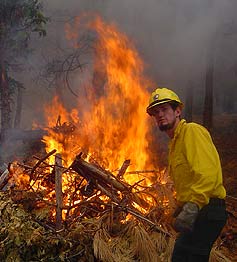The Role of Biomass in Achieving Clean Power Plan Goals – A 2016 Workshop to Foster a Constructive Discussion
By Janet McCabe
Since issuing the Clean Power Plan (CPP), states and stakeholders have shown a strong interest in the role biomass can play in state plans to reduce carbon emissions under the rule. Many states are seeking to better understand how maintaining and building on their existing approaches to sound carbon- and greenhouse gas (GHG)-beneficial forestry and land management practices can yield biomass resources that will help them meet their CPP goals, and how to craft plans that will be federally approvable under the final CPP guidelines. To respond to this interest and to support state and stakeholder efforts to incorporate bioenergy in their CPP plans, we will be holding a public workshop in early 2016 for stakeholders to share their successes, experiences and approaches to deploying biomass in ways that have been, and can be, carbon beneficial.
The president’s Climate Action Plan and a range of the administration’s policies recognize that America’s forests and other lands must continue to play an essential role in mitigating the effects of carbon pollution. Biomass derived from land that is managed under programs that ensure the long-term maintenance of healthy forests can serve as an integral part of a broader forestry-based climate strategy, so the CPP expressly includes bioenergy as an option for states and utilities in CPP compliance. It reflects the fact that, in many cases, biomass and bioenergy products in the power system can be an integral part of state programs and foster responsible land management and renewable energy.
State flexibility is a key component of the CPP. It recognizes the unique circumstances of each state’s energy mix and approaches to energy efficiency and renewable energy. Many states already have extensive expertise in sound carbon- and GHG-beneficial forestry and land management practices, and the CPP’s flexibility will give states the ability to build in approaches to biomass and bioenergy unique to their forests and land management programs and policies. It recognizes the importance of forests and other lands for climate resilience – in addition to the carbon benefits of biomass – fostered by a variety of land use policies, renewable energy incentives and standards, and GHG strategies. Working with stakeholders, these states promote viable forestry and agricultural product markets, which help protect and preserve healthy and productive lands and contribute to the continued and improved management of these lands.
That is why the CPP creates a pathway for states to use biomass as part of their plans to meet their emission reduction guidelines, and we expect many states to include biomass as a component in their state plans. We look forward to reviewing plans that incorporate well-developed forestry and other land management programs producing biomass that can qualify under the guidelines laid out in the CPP, and we are confident that the CPP offers sufficient lead time and flexibility for states to develop approvable programs.
So a key goal of the workshop we’ll be holding is to provide an opportunity for states with well-developed forestry and land management practices to share their experiences. Another is to foster a constructive dialogue about how states can best include biomass in their compliance plans if that is a path they choose to follow. The workshop will showcase the constructive compliance approaches many states are already implementing or developing. And to prepare for the workshop, our first step is to reach out to key stakeholders to get ideas on the agenda.
We look forward to working with states and stakeholders to ensure that biomass continues to play an important role in accomplishing our climate change goals. Open lines of communication and sharing information helped shape the final Clean Power Plan, and continued constructive engagement will be vital for us to achieve significant climate and health benefits as we implement the CPP.

 Each week we write about the science behind environmental protection.
Each week we write about the science behind environmental protection. 
